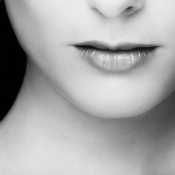Rhinoplasty (Nose Job)
!


Rhinoplasty (Nose Job)
Rhinoplasty also known as nose remodelling, nose reshaping or simply nose job, is another aesthetic procedure extremely popular and performed with a high level of frequency and success rate by our plastic surgeons. A nose job is generally applied for correcting, reducing or increasing, the size of your nose, shrinking the size of your nostrils, changing the contours of your nose tip or nose vault, or altering the angle between your nose and your upper lip. Rhinoplasty as part of the reconstructive surgery can be applied to cure trauma or rectify birth defects or difficulties with breathing.
Who is a good candidate for rhinoplasty?
If you are physically healthy person with a clear idea about the benefits of a nose reshaping surgery and you have a visible nose disproportion and a proper motivation to have it adjusted, then there is a very good chance for you to be a proper candidate for the procedure. We realize that some of our patients may be after an aesthetic ideal when considering a nose reshaping surgery. An aesthetic rhinoplasty can produce excellent results as long as the patient has realistic expectations about the improvements that can be achieved.
Age is also an important consideration when assessing patient's candidacy for the procedure. Most physicians will refuse to perform the surgery on teenage girls and boys that are still in growth phase. Patient's emotional stability and ability for social adaptation are also major concerns especially when people are in such a young age. An honest and open discussion with the surgeon about the patient's motives for undergoing the nose correction is always advisable.
What are the risks involved?
Patients undergoing a rhinoplasty face rare and minimal complications such as nose bleeding, infection or allergic reaction to the anaesthesia. Any risks associated with a nose job surgery may be significantly reduced when the procedure is carried out by an experienced and certified physician and when patient is strictly adhering to the surgeon's advices before and after the procedure.
Scarring
No visible scars are left provided that a rhinoplasty is performed only inside the nose. When the surgeon uses an 'open' technique or the procedure is aimed at narrowing down the nostrils, tiny almost invisible scars will be left under the base of your nose. In some 5 % of the cases it may be necessary for the patient to undergo a minor second surgery also known as a revision procedure such as a correction of small irregularity. Please note that no one can predict the necessity for a supportive procedure even the most experienced surgeons.
Before the procedure
Eating and drinking, smoking and face washing rules will be advised by your physician prior to the operation. You may be advised to stop or begin in-taking certain medications or vitamins. Following closely the doctor's prescriptions will guarantee a problem free surgery. Plan ahead when getting ready for the procedure and engage someone to help you for the first couple of days after the surgery.
Preliminary examination
During your first check up at the clinic the surgeon will examine carefully the shape of your face, the bone and cartilage structure of your nose as well as the thickness of your skin. Those are the factors that will play a major part during and for the outcome of the operation. A consultation with your surgeon regarding your expectations and preferences about your new look is also important and should take place during your first visit. It is of utmost importance to inform your surgeon if you are a smoker, having respiratory problems or being allergic. Your doctor should be also aware of any nose reconstructive surgeries that you have had in the past. Please do not forget to mention if you are on any type of medication.
The Procedure
Up to the scale of the planned surgery, a nose job can be performed under local or general anaesthesia. The procedure is usually carried in one day, but sometimes an overnight stay at the clinic could be required. Although it is a generally complex procedure, the rhinoplasty lasts somewhere between two and four hours. In the majority of cases the surgeons carry out the procedure from inside the nose by performing an incision through the nostrils. When the procedure is more complicated, surgeons perform an 'open' surgery, performed by making an incision through the vertical tissue separating the nostrils called "columella". The open technique is preferred by surgeons, because it leaves almost no scarring and moreover, airway blockages and nasal cavity deformity can be rectified effecting into easier breathing. Throughout the operation, the supportive nose structure including the bone and the cartilage, is being detached from the nose's vault and reshaped according to patient's preferences. The nasal bones are drawn together to narrow down the lower part of the nose. The reducing of the nostrils' size is achieved by removing the triangular pieces from the base of the nose. If necessary the septum is reshaped in order to improve the angle between the nose and the upper lip. When the tip of the nose needs correction, the surgeon shaves off and reshapes the cartilages on the tip of the nose. Towards the end of the procedure a nasal cast, nasal packing or, if necessary, silicon sheets may be placed inside your nose to stabilise the septum, preserve the new shape and reduce the swelling.
After the procedure
During the first 24 hours after the surgery you may experience light pain, facial swelling and some dull headache. Painkillers can easily do away with any discomfort or pain you may be going through during the first couple of days. It is necessary that you spend the first day in bed with your head in upward position. Appling cold compression will help you to reduce the facial swelling and redness around your eyes which may increase during the first three days but will eventually vanish within two weeks time. Some minor swelling may remain persistent for few months. Your nose may be running during the first two days and nasal congestion may be experienced for a couple of weeks. Even so you should avoid blowing your nose or touching the nasal packing in order to help tissues to heal completely. The nasal packing will be taken out in few days and that will release some of the discomfort. The nasal cast is removed one week later together with the sutures of the columella, if an open technique has been applied. When the procedure is performed within the nose, the sutures disappear by themselves.
Recovery
Patients may return to a desk work or school within a week. You will need to wait two or three weeks however before you return to more intensive activities and work. For faster recovery it is important that you restrain from strenuous activities raising your blood pressure such as jogging, swimming, kneeling down or sexual activity. Avoid rubbing or blowing your nose as well as prevent sunburn for at least eight weeks. Be extremely cautious when washing your face or applying cosmetic products on your hair. It may be wise to replace your prescribed eyeglasses with contact lenses until you fully recover. When several months have passed you may be asked for a second visit to the clinic for following up your recovery progress. In between the consultations you can always contact your surgeon for any issue regarding your recovery that is left unclear or possibly disturbing you.
Results
During the first several days after the surgery, when the desired aesthetic results are still far away, you may feel low and discouraged because of the constant swelling and redness of your face. This is quite common and anticipated. In two weeks time you will start to notice general improvements and almost all evident signs of surgery will disappear. Due to the delicacy of the operation the healing process is slow. It may take between six moths and a year before your nose stabilizes and acquire its final contours. As a result of the surgery the vault of the nose adopts a straighter line, the tip is taking a better shape and the angle between the upper lip and the nose is increased. Your new looks may not be completely accepted or noticed by members of your family or friends, however it is essential that you realize the improvements and that the goals you were after at the beginning are achieved. Then you will be satisfied with the results and the surgery will be a success.
